
The Complutense University of Madrid is a public research university located in Madrid. Founded in Alcalá in 1293, it is one of the oldest operating universities in the world, and one of Spain's most prestigious institutions of higher learning. It is located on a sprawling campus that occupies the entirety of the Ciudad Universitaria district of Madrid, with annexes in the district of Somosaguas in the neighboring city of Pozuelo de Alarcón. It is named after the ancient Roman settlement of Complutum, now an archeological site in Alcalá de Henares, just east of Madrid.
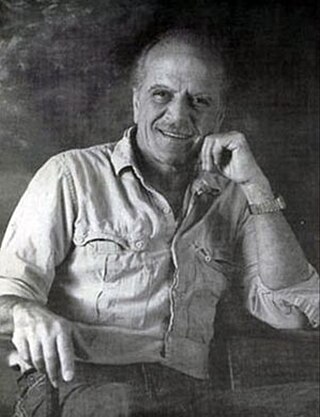
Rodolfo Abularach was a Guatemalan painter and printmaker of Palestinian descent.
Adriano Buergo, is a Cuban artist specializing in painting, drawing and installations.
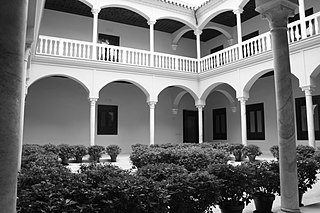
Buenavista Palace is a historical edifice in Málaga, Andalusia, Spain. It was built in the first half of the 16th century for Diego de Cazalla on the ruins of a Nasrid palace. Declared a "Property of Cultural Interest" in 1939, it was leased to the Spanish government in 1946 for a provincial art museum, which opened in 1961. In 1997 it was acquired to house the present Museo Picasso Málaga, which opened there in 2003. It is located in the historic center of Málaga, in the Calle San Agustín in the former Jewish quarter (judería), next to the San Agustín convent and not far from the Cathedral of Málaga.
José-Carlos Mariátegui is a scientist, writer, curator and scholar on culture, new media and technology. He explores the intersection of culture and technology, history of cybernetics, media archeology, digitization, video archives, and the impact of technology on memory institutions. Born in 1975, he is the son of Peruvian psychiatrist Javier Mariategui and the grandson of Jose Carlos Mariategui, the most influential Latin American Marxist thinker of the 20th century. He studied Mathematics and Biology at Cayetano Heredia University in Lima, Perú and did both Masters and Doctoral degrees in Information Systems and Innovation from the London School of Economics and Political Science – LSE (London). His PhD, dated 2013, was titled "Image, information and changing work practices: the case of the BBC’s Digital Media Initiative" under the supervision of Prof. Jannis Kallinikos. Has been involved in teaching and research activities, as well as published a variety of articles on art, science, technology, society and development. He founded Alta Tecnología Andina (ATA), non-profit organization dedicated to the development and research of artistic and scientific theories in Latin America. Founder of the International Festival of Video and Electronic Art in Lima (1998–2003). Founding Director of the José Carlos Mariátegui Museum, in Lima, Peru (1995-2005). He is currently an Adjunct Professor at LUISS (Rome), a Senior Visiting Research Fellow at the Department of Media and Communications at the LSE, a Board Member of Future Everything (UK), a Member of the Board of Trustees (Kuratorium) of the ZKM Center for Art and Media Karlsruhe (Germany) and Editorial Board member for the Leonardo Book Series at MIT Press. He also chairs the Museo de Arte de Lima - MALI Education Committee.

Paloma Navares is an interdisciplinary Spanish artist who combines sculpture, photography, video and audio in her installations. Recurring themes in her work are the feminine condition, the historical representation of women through art, the critical analysis of the canon, madness, beauty and aging.
Leandro Katz is an Argentine-born writer, visual artist and filmmaker known primarily for his films and photographic installations. His works include long-term, multi-media projects that delve into Latin American history through a combination of scholarly research, anthropology, photography, moving images and printed texts.
The following is a timeline of the history of the city of Madrid, Spain.

Adriana Lestido is an Argentine photographer. Her black-and-white photographs document the often difficult place of women in society.

Marisa González is a Spanish multimedia artist. She is considered a pioneer in Spain for the use of the new technologies in contemporary art. She works in distinct disciplines like photography, installations, video-art or net-art. She has been Vice President of the association Mujeres en las Artes Visuales MAV, from 2010 until 2016.
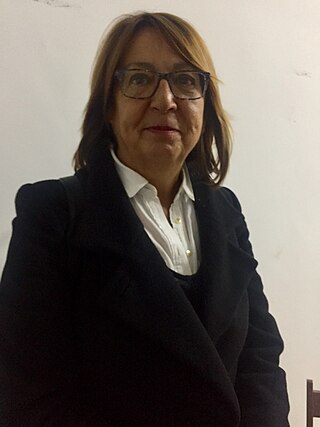
Rocio de la Villa is a Spanish university professor, art historian, curator, researcher and art critic. She has edited and collaborated in the edition of distinct catalogues and publications related with the art and the position of the woman in the artistic world. In 2014 she was rewarded with the Prize MAV in the modality of Criticism of art. She also goes by the names Rocio de la Villa Ardura and Rocio Villa-Ardura.

Marian Lopez Fernandez-Cao is a Spanish university professor, curator and researcher, specializing in art, feminism, art therapy and social inclusion. Since 1992 she has been a professor in the Universidad Complutense of Madrid, and is expert on the artist Sonia Delaunay.

The Fundación Juan March is a foundation established in 1955 by Juan March, who was Spain's richest man. The foundation produces exhibitions as well as concert and lecture series. Its headquarters in Madrid houses a library devoted to contemporary Spanish music and theater. It owns and operates the Museo de Arte Abstracto Español, in Cuenca, and the Museu Fundación Juan March, in Palma. Its Center for Advanced Study in the Social Sciences, which has granted nearly one hundred doctoral degrees to Spanish students, is currently incorporated within the Instituto mixto Carlos III/Juan March de Ciencias Sociales at the Charles III University of Madrid.
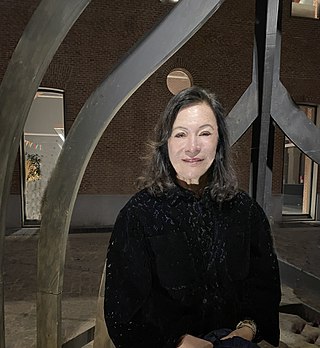
Cecilia Paredes is a Peruvian-born multimedia artist residing in Philadelphia. Her primary themes include the power of nature, femininity, and migration, which have been subjects of many of her shows. She frequently utilizes natural elements, often recycled waste materials and primarily organic ones, in her installations. One of her best-known works is "Paisajes" in which she camouflages herself and uses her own figure as a canvas for body painting.

José Guirao Cabrera was a Spanish cultural manager and art expert who served as Minister of Culture and Sport in the government of Pedro Sánchez between 2018 and 2020. He was also Member of the Congress of Deputies.
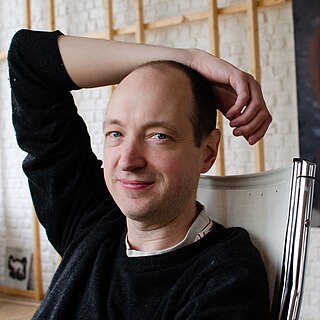
Philipp Fröhlich is a German painter who lives and works in Brussels. His figurative paintings are influenced by his studies of scenography in the class of Professor Karl Kneidl at Kunstakademie Düsseldorf and he frequently uses models for the composition of his works.

María Ortega Gálvez is a Spanish artist specializing in painting, engraving, photography and textiles. She is director of the international association World Textile Art (WTA) and director of WTA's VIII International Biennial of Contemporary Textile Art, held in Madrid, Spain in 2019.

Patricia Mayayo Bost is a Spanish art historian, professor, and researcher. Her areas of research and study include the historiography of feminist and queer art, the history of women artists, and contemporary artistic practices.

Isabel de Ceballos-Escalera y Contreras was a Spanish museum director and curator. She was deputy director of the Museo del Prado and director of the Museo Nacional de Artes Decorativas, and a member of the Hispanic Society of America. A laureate of the Civil Order of Alfonso X, the Wise, she is considered one of the world's great specialists in Spanish ceramics.


















